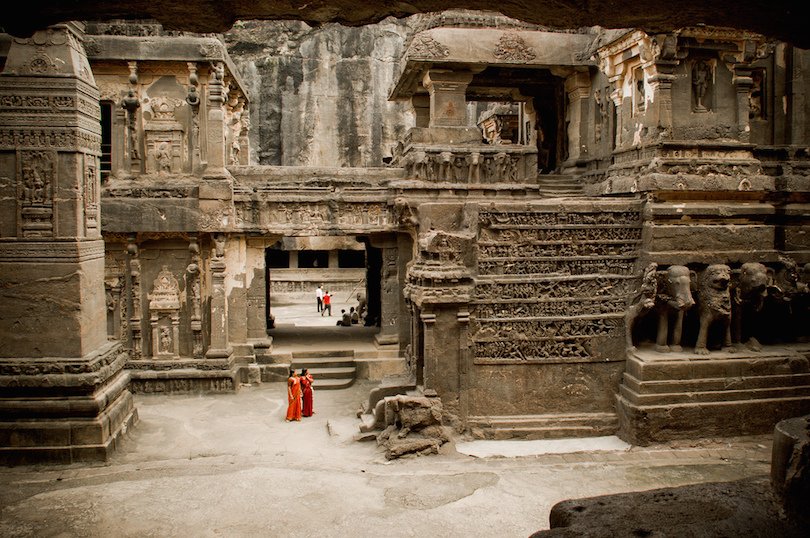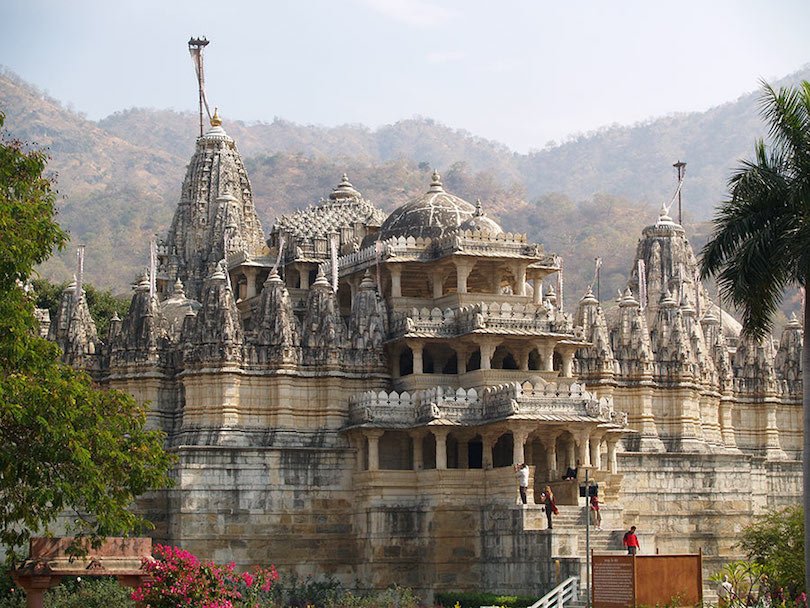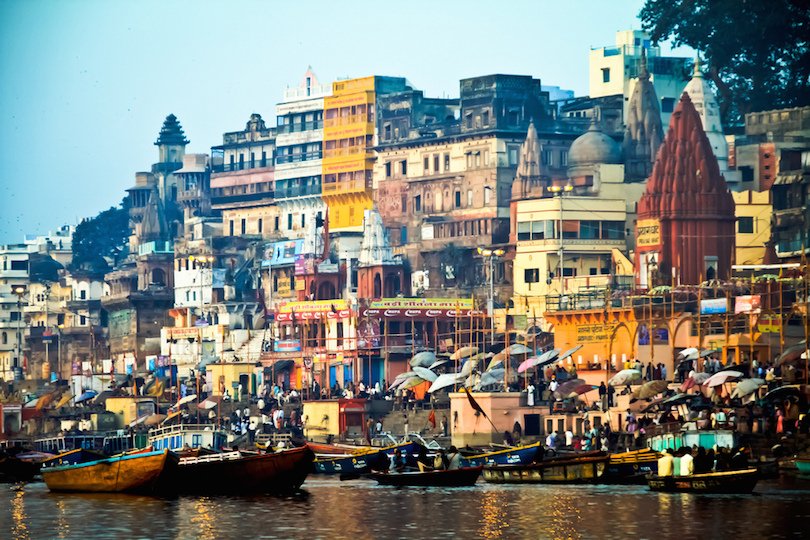27 Best Tourist Places in India, it is the seventh-largest country in the world, boasts a vast expanse that stretches from the towering peaks of the Himalayas to the lush greenery of Kerala, and from the revered Ganges River to the expansive Thar desert. With a population exceeding one billion, the people of India are comprised of over two thousand ethnic groups and communicate in more than 200 distinct languages.
Given its immense size and population, India offers an unparalleled array of cultures, landscapes, historical landmarks, and captivating destinations waiting to be explored. From ancient ruins to mesmerizing religious structures, vibrant cities, and diverse terrains, India presents an inexhaustible collection of tourist attractions that will perpetually inspire and captivate visitors.
Dharamsala

Dharamsala serves as a second home for the Dalai Lama, who sought refuge here in 1959 after fleeing Tibet. The city is also the headquarters of the Tibetan government in exile. The name Dharamsala translates to “spiritual abode” or “resting place for pilgrims,” which is fitting given the large Tibetan population residing here. With proper arrangements, one may have the opportunity to attend a public teaching session by the Dalai Lama. Dharamsala is a sought-after destination for hikers and travelers seeking to learn yoga and Indian cooking.
Pushkar Camel Fair
If visitors are interested in bringing back a camel as a memento from their journey to India, they should consider attending the Pushkar Camel Fair. This autumn fair, which spans two weeks, offers a great chance to purchase various livestock, with over 1,000 animals being bought, sold, or traded. However, camels remain the primary attraction. Throughout the years, the fair has transformed from a mere marketplace for farmers to a grand festival encompassing camel races, sports events, amusement rides, and even mustache competitions.
Ranakpur Temple
The Ranakpur Temple is renowned for its exquisite art and architecture, making it one of the most impressive and ornate Jain temples in the world. Constructed in the 15th century, this temple took over half a century to complete. Boasting 29 halls, 80 domes, and a staggering 1,444 pillars, each pillar stands out with its own distinct design. Adorning the domes are statues of deities, while the interior is adorned with intricate carvings that captivate the eye.
Varkala Beach

Varkala Beach attracts a large number of tourists who are seeking a respite from their sightseeing activities. With its picturesque sandy beaches nestled against magnificent cliffs, it offers the perfect setting for beachcombing, sunbathing, and swimming. It comes as no surprise that the Discovery channel has recognized it as one of the top 10 seasonal beaches in the world.
Additionally, the beach is renowned for its mineral springs, which are believed to possess healing properties and the ability to cleanse one’s sins. For those who wish to indulge in some sightseeing, a visit to the Janardhana Swami Temple is highly recommended. This ancient temple, dedicated to Lord Vishnu, has stood for over 2,000 years and offers a fascinating glimpse into the region’s rich cultural heritage.
Darjeeling

Darjeeling, located in the northeastern region of India, is renowned for its tea, picturesque landscapes, and railway system. The tea produced in Darjeeling is known for its delicate appearance, light hue, pleasant aroma, and calming taste. The tea leaves are cultivated in the hills surrounding the town. As one looks further into the horizon, the majestic snow-capped peaks of the Himalayan foothills come into view. To reach Darjeeling, travelers can opt for a three-hour car ride from the nearest airport or embark on a seven-hour journey aboard the Darjeeling Himalayan Railroad, a narrow gauge railway affectionately referred to as the “toy train.”
Qutb Minar

The Qutb Minar stands as the second tallest brick minaret globally, reaching a towering height of 80 meters (270 feet). This magnificent structure is constructed using a combination of marble and red sandstone bricks, which are intricately carved with verses from the Koran. The construction of this remarkable minaret spanned four years, commencing in 1193.
Accessible only to a select few, a circular staircase boasting 379 steps leads to its pinnacle. Adjacent to the minaret lies the Quwwat-ul-Islam Mosque, the first mosque ever built in India. In close proximity, one can also find the Iron Pillar, aptly named due to its composition of metals that resist rusting.
Thikse Monastery

Travelers who have visited Tibet might be astounded by the sight of Thikse Monastery, as it bears a striking resemblance to the renowned Potala Palace in Lhasa. However, this Buddhist monastery is situated in Ladakh, India. Similar to its Tibetan counterpart, Thikse Monastery is perched at a lofty altitude of 3,600 meters (11,800 feet).
As the largest monastery in Ladakh, it boasts an impressive 12-story structure and houses the tallest statue, a magnificent 14-meter (45-foot) depiction of Maitreya. This statue is enshrined within a temple that commemorates the visit of the Dalai Lama in 1970. Additionally, Thikse Monastery is adorned with significant Buddhist artwork, including stupas and wall paintings.
Mysore Palace

Visitors to Mysore Palace are in for an incredible experience at the second most popular tourist attraction in India. The Mysore Palace complex consists of seven palaces, each one more breathtaking than the last. From 1399 to 1950, the Wodeyars ruled over Mysore, and their original palace was constructed in 1399. However, the current palace, a magnificent blend of Muslim, Hindu, Gothic, and Raiput architectural styles, was completed in 1912. Standing three stories tall, it boasts stunning deep pink marble domes and an elegant ivory tower. Additionally, the palace is renowned for hosting an annual arts and culture festival called Dashara.
Mehrangarh Fort

Mehrangarh Fort, situated in Jodhpur, is an awe-inspiring and formidable fortress, ranking among the largest in India. Perched on a hill, it was constructed in the 15th century with the primary purpose of defense. Remarkably, even today, the fort bears witness to its history with visible cannonball imprints on one of its seven entrance gates. Upon entering the fort, visitors will be captivated by the exquisite and intricately adorned palaces within its walls. The fort’s museum houses a remarkable assortment of palanquins, musical instruments, royal cradles, and costumes. Additionally, from the ramparts, where an ancient cannon is positioned, visitors can relish breathtaking panoramic views of Jodhpur.
Jim Corbett National Park
 curiouslog / Wikipedia
curiouslog / Wikipedia
The endangered Bengal tiger is a sight that everyone enjoys witnessing in its natural habitat. Located in India, Jim Corbett National Park is the oldest national park in the country and offers a great opportunity to catch a glimpse of these majestic creatures. Originally established in 1936, the park was later renamed in 1954 to pay tribute to Jim Corbett, a renowned author and wildlife conservationist who played a significant role in the creation of this nature reserve.
The park’s dense vegetation, consisting of jungles and forests, poses a challenge when it comes to spotting the elusive tiger. However, the best time to increase your chances of seeing one is between April and June. Even if the tiger remains elusive, visitors to the park can still enjoy encounters with other fascinating wildlife such as elephants, leopards, rhinoceros, and Himalayan black bears.
Amber Fort

Amber Fort, a prominent tourist destination near Jaipur, is renowned for its remarkable architectural design. Perched on a hill, this complex beautifully combines Hindu and Rajput influences. Constructed during the late 16th century, the structure is made of pink and red sandstone as well as marble, and has even made appearances in Bollywood movies.
Its most notable feature is the Mirror Palace, an exquisite chamber with a transparent glass ceiling that allowed the queen to gaze at the stars before drifting off to sleep. Visitors can reach the fort on foot, by a 4WD vehicle, or by riding an elephant.
Meenakshi Amman Temple

The Meenakshi Amman Temple, a Hindu temple that dates back to the sixth century, is an impressive structure that was mostly built a thousand years later. It is located on the Vaigai River and is considered the most important temple in Madurai, a city that has been around for 2,500 years. The temple is adorned with intricate carvings both inside and outside, and it has 14 towers, each dedicated to a god or person. The temple complex is home to around 33,000 sculptures and beautiful paintings.
Khajuraho

The Khajuraho temple complex is a remarkable fusion of art and eroticism, resulting in the creation of exquisite medieval temple art that is renowned not just in India, but globally as well. Constructed during the 10th century, only a mere 25 out of the original 85 temples have managed to withstand the test of time.
This colossal collection of Hindu and Jain temples stands as the largest of its kind in the world, showcasing intricate carvings and sculptures that depict the traditional lifestyles of women during the medieval era. It is worth noting that these sculptures were crafted during a period when erotic art held great significance, with some of the carvings being explicitly sexual in nature.
Ajanta Caves

The Ajanta Caves, which were carved out of rock, are ancient cave structures that originated in the 2nd century BC. These remarkable caves were abandoned around 650 AD and were completely forgotten until 1819, when a group of British hunters accidentally stumbled upon them.
The caves’ remote location played a significant role in preserving the exquisite state of some of their paintings, which can still be admired today. The well-maintained murals portray a wide range of subjects, including battle scenes, bustling city streets, lush forests teeming with animals, and majestic snow-covered mountains. Serving as the entrance to the Ajanta Caves and the equally awe-inspiring Ellora Caves, the city of Aurangabad holds great significance.
Kerala backwaters

The Kerala backwaters encompass a series of lagoons and lakes that run parallel to the coastline of the Arabian Sea in the state of Kerala. Within these backwaters, a diverse range of aquatic life thrives, including crabs, frogs, mudskippers, water birds, otters, and turtles. Presently, the most sought-after tourist attraction in the backwaters is houseboat tourism, where traditional rice boats known as Kettuvallams have been transformed into floating hotels, offering a unique and memorable experience for visitors.
Lake Palace

The Lake Palace, situated in Lake Pichola within the city of Udaipur, was constructed as a regal summer palace during the 18th century. Presently, it stands as a lavish 5 Star hotel, managed by the esteemed “Taj Hotels Resorts and Palaces”. To facilitate the arrival of guests, the Lake Palace hotel operates a boat service that ferries them from a jetty located at the City Palace on the eastern shore of Lake Pichola. This palace gained widespread recognition in 1983 when it was prominently featured in the James Bond film Octopussy, serving as the residence of the eponymous character.
Virupaksha Temple

The Virupaksha Temple, located in the city of Hampi, initially began as a modest shrine and gradually expanded into a vast complex during the reign of the Vijayanagara rulers. This temple is renowned for its uninterrupted operation since its establishment in the 7th century AD, making it one of India’s most ancient and continuously functioning Hindu temples.
Palolem
Palolem stands as the southernmost developed beach in Goa, boasting its remarkable beauty. Nestled within towering headlands, this natural bay offers a serene and picturesque sea with a gradually sloping bed. For those seeking an ideal beach paradise complete with affordable dining options, quality accommodations, vibrant nightlife, and a community of like-minded individuals, Palolem unquestionably emerges as the ultimate destination.
Kanha National Park

Kanha National Park stands as one of the most exquisite wildlife reserves in Asia and a prime destination to witness the majestic tigers of India. The verdant sal and bamboo forests, along with the picturesque grassy meadows and ravines, served as a muse for Rudyard Kipling’s renowned novel “Jungle Book,” rendering Kanha as a prominent highlight among India’s attractions.
Harmandir Sahib
The Golden Temple, also known as the Harmandir Sahib, is the primary tourist destination in Amritsar and holds great religious significance for the Sikh community. The temple’s construction was initiated by Guru Ramdas ji in the 16th century, and in the 19th century, Maharaja Ranjit Singh covered the upper floors of the temple with gold. The temple’s beauty is breathtaking, and it attracts thousands of pilgrims from all over India who are thrilled to visit a place they usually only see on TV.
Jaisalmer

Jaisalmer, situated in the remote western part of Rajasthan near the Pakistan border, is a picturesque desert town. The golden-hued sandstone walls of this “Golden City” emerge majestically from the Thar desert, evoking images from the Arabian Nights. Dominating the cityscape is the magnificent Jaisalmer Fort. Although uncontrolled commercialism has somewhat diminished the romantic allure of Jaisalmer, it continues to be a highly sought-after tourist destination in India, despite the presence of touts and tour buses.
Ellora Caves
 Ellora Caves, a massive monastery-temple cave complex carved out of rock, showcases exceptional cave art. With 100 caves in total, only 34 are accessible to the public. The Kailasa Temple, the largest monolithic rock excavation in the world, is situated here and covers an area twice the size of Athens’ Parthenon. These caves, constructed between the seventh and ninth centuries, are dedicated to Hindu, Buddhist, and Jainism deities.
Ellora Caves, a massive monastery-temple cave complex carved out of rock, showcases exceptional cave art. With 100 caves in total, only 34 are accessible to the public. The Kailasa Temple, the largest monolithic rock excavation in the world, is situated here and covers an area twice the size of Athens’ Parthenon. These caves, constructed between the seventh and ninth centuries, are dedicated to Hindu, Buddhist, and Jainism deities.
Varanasi
Varanasi, located on the banks of the River Ganges, holds immense religious significance for Hindus, Buddhists, and Jains. It is also renowned as one of the oldest cities that has been inhabited continuously throughout history. Varanasi encapsulates both the remarkable and challenging aspects of India, making it a city that can be quite overwhelming. The awe-inspiring view of devotees performing their rituals in the River Ganges during sunrise, with ancient temples forming a majestic backdrop, is undeniably one of the most breathtaking spectacles worldwide.
Taj Mahal
The Taj Mahal, located in Agra, is a colossal mausoleum made of white marble. It was constructed between 1632 and 1653 under the command of the Mughal emperor Shah Jahan as a tribute to his beloved wife. Often referred to as “a teardrop on the cheek of eternity,” it stands as a remarkable example of Mughal architecture and remains a prominent tourist destination in India. In addition to the magnificent white domed mausoleum, the Taj Mahal encompasses various other exquisite structures, serene reflecting pools, and meticulously landscaped gardens adorned with blooming trees and shrubs.
Hawa Mahal

The Hawa Mahal, a magnificent five-story building made of pink and red sandstone, is situated in the center of Jaipur. It is one of the most visited tourist spots in the city and has a distinct function. The Palace of the Wind, as it is also known, was designed as a place where female members of the royal family could observe street events without being seen. The pyramid-shaped palace boasts 953 windows, each adorned with intricate designs. Built in 1799, the Hawa Mahal is a remarkable representation of Rajputana architecture.
Havelock Island

Havelock Island, the largest island in Ritchie’s Archipelago in the Andaman Islands, promotes ecotourism. Despite being less crowded compared to other Asian islands, the number of tourists visiting Havelock Island is increasing due to its beautiful beaches, relaxed ambiance, and various snorkeling and scuba diving options. The ideal period to visit is from mid-January to mid-May, when the weather is sunny and the seas are calm. Redhanagar Beach is renowned as one of the top beaches in Asia.
Bandhavgarh National Park is one of the 27 Best Tourist Places in India
Many travelers aspire to witness wildlife in its natural habitat. Bandhavgarh National Park is a destination that guarantees a fulfilling experience in this regard. As one of India’s renowned national parks, Bandhavgarh offers the chance to encounter various species such as leopards, barking deer, sloth bears, hyenas, Indian bison, and wolves. However, the true highlight lies in the majestic Bengal tigers, captivating the attention of visitors, even though only a small fraction, around 10 percent, may be fortunate enough to spot one. For optimal wildlife sightings, it is advisable to explore the park during the early morning or late afternoon hours.












